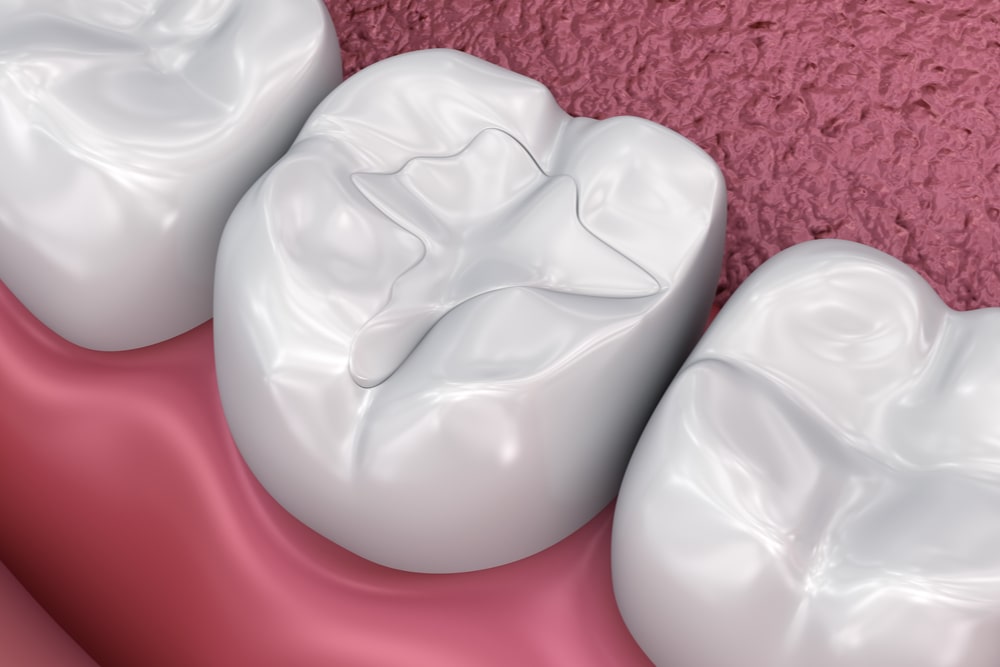Dental sealants are clear coatings applied to the surfaces of a child’s molars to prevent the development of tooth decay. They work by preventing food and plaque from resting in the grooves and crevices of molars – an area especially susceptible to cavities. According to the National Institute of Dental and Craniofacial Research, nearly 1 in 3 U.S. children ages 6 to 12 currently have sealants on their teeth.
Did you know…
that sealants can last as long as 5 to 10 years pediatric dental patients? Depending on a child’s oral development and risk factors for tooth decay, sealants may be applied to the teeth as young as age 6. It is at this time that the first molars typically appear. Additional molars erupt at approximately age 12. If possible, sealants should be applied to a child’s teeth immediately after any molar has appeared to reduce the risk of early decay.
Frequently Asked Questions
What are sealants?
Sealants protect the grooved and pitted surfaces of the teeth, especially the chewing surfaces of back teeth where most cavities in children are found. Made of clear or shaded plastic, sealants are applied to the teeth to help keep them cavity-free.
How do sealants work?
Even if your child brushes and flosses carefully, it is difficult—sometimes impossible—to clean the tiny grooves and pits on certain teeth. Food and bacteria build up in these crevices, placing your child in danger of tooth decay. Sealants “seal out” food and plaque, thus reducing the risk of decay.
How long do sealants last?
Research shows that sealants can last for many years if properly cared for. Therefore, your child will be protected throughout the most cavity-prone years. If your child has good oral hygiene and avoids biting hard objects, sealants will last longer. Your pediatric dentist will check the sealants during routine dental visits and recommend re-application or repair when necessary.
What is the treatment like?
The application of a sealant is quick and comfortable. It takes only one visit. The tooth is first cleaned. It is then conditioned and dried. The sealant is then flowed onto the grooves of the tooth and allowed to harden or hardened with a special light. Your child will be able to eat right after the appointment.
How much does it cost?
The treatment is very affordable, especially in view of the valuable decay protection it offers your child. Most dental insurance companies cover sealants. Some companies, however, have age and specific tooth limitations. Check with your benefits provider about your child’s coverage and talk to your pediatric dentist about the exact cost of sealants for your child.
Which teeth should be sealed?
The natural flow of saliva usually keeps the smooth surfaces of teeth clean but does not wash out the grooves and fissures. So the teeth most at risk of decay—and therefore, most in need of sealants— are the six-year and twelve-year molars. Many times the permanent premolars and primary molars will also benefit from sealant coverage. Any tooth, however, with grooves or pits may benefit from the protection of sealants. Talk to your pediatric dentist, as each child’s situation is unique.
If my child has sealants, are brushing and flossing still important?
Absolutely! Sealants are only one step in the plan to keep your child cavity-free for a lifetime. Brushing, flossing, balanced nutrition, limited snacking, and regular dental visits are still essential to a bright, healthy smile.






